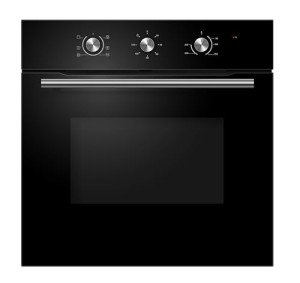The Ultimate Guide to Buying a Built-In Oven
In the realm of modern cooking appliances, built-in ovens stand apart for their seamless combination into kitchen cabinetry, visual appeal, and advanced cooking innovations. They supply a myriad of functions and a structured style, accommodating both cooking lovers and daily cooks. Nevertheless, choosing the ideal built-in oven can be difficult offered the wide range of options readily available in the market. This article serves as a comprehensive guide, highlighting key factors to consider when buying a built-in oven, popular features, and responses to regularly asked concerns (FAQs).
Why Choose a Built-In Oven?
Built-in ovens provide numerous benefits, consisting of:
- Space Efficiency: They are developed to fit into existing cabinets, optimizing kitchen space.
- Visual Appeal: With a variety of designs and surfaces, built-in ovens enhance the general look of a kitchen.
- Advanced Features: Many come geared up with modern technology, making cooking simpler and more precise.
- Personalization: Built-in ovens can be set up at eye level or below counter height, providing flexibility based upon individual preference.
Secret Considerations When Buying a Built-In Oven
Here are very important aspects to consider before making a purchase:
1. Size and Dimensions
Before selecting a built-in oven, it is important to determine the readily available area. Requirement built-in ovens typically fall into two primary categories:
| Oven Size | External Dimensions | Internal Capacity |
|---|---|---|
| Single | 24-30 inches large | 3-5 cubic feet |
| Double | 30-36 inches broad | 5-10 cubic feet |
Make sure that the chosen design fits your kitchen cabinetry both in width and height.
2. Type of Oven
Built-in ovens can be found in different types, including:
- Conventional Ovens: Uses heating aspects above and below for basic baking and roasting.
- Convection Ovens: Employs a fan to circulate hot air, offering even cooking.
- Wall Ovens: Installed vertically at eye level for simpler access.
- Steam Ovens: Uses steam to prepare food, protecting nutrients and moisture.
3. Fuel Type
Built-in ovens are available in various fuel types:
- Electric: Often heats up more equally, perfect for baking.
- Gas: Offers immediate temperature control, great for roasting and broiling.
- Dual Fuel: Combines the very best of both worlds with a gas cooktop and electric oven.
4. Features and Technology
Modern built-in ovens come with a myriad of functions that improve the cooking experience:
- Smart Technology: WiFi-enabled models permit users to control the oven from another location via an app.
- Self-Cleaning: Reduces the effort required to maintain a tidy oven.
- Delay Start: Lets you program the oven to start cooking at a predetermined time.
- Several Cooking Modes: Options for baking, broiling, roasting, and more.
5. Brand name and Price
Picking a trustworthy brand can ensure quality and dependability. Comparative pricing among different brand names can aide in decision-making. Here's a quick summary of popular brands and their rate varieties:
| Brand | Avg. Rate Range | Noteworthy Features |
|---|---|---|
| Bosch | ₤ 1,000 - ₤ 3,000 | Streamlined design, dependable efficiency |
| Whirlpool | ₤ 800 - ₤ 2,500 | User-friendly controls |
| KitchenAid | ₤ 1,200 - ₤ 3,500 | Ingenious functions, elegant styles |
| GE Appliances | ₤ 900 - ₤ 2,800 | Range of sizes and options |
Installation Considerations
Installation of a built-in oven is an essential aspect that should not be neglected. It's highly advised to employ a professional when installing a built-in oven. They can address electrical or gas line issues and ensure that the oven is fitted safely in the cabinets.
Maintenance Tips
Keeping a built-in oven is vital to extend its life-span and performance.
- Clean Regularly: Wipe down surface areas and avoid letting spills end up being baked-on.
- Use Appropriate Cookware: This avoids damage to interior surface areas and improves cooking efficiency.
- Examine Seals: Inspect the door seals regularly for wear and tear to keep energy efficiency.
FAQs About Built-In Ovens
1. How do I know which size built-in oven to buy?
Measure the area you have offered and compare it to the oven measurements. Requirement sizes usually range from 24 to 30 inches for single ovens.
2. Can I install a built-in oven myself?
While it's possible to set up a built-in oven without expert help, hiring a skilled technician is recommended for security, particularly with gas or electrical connections.
3. What is the average life-span of a built-in oven?
Normally, built-in ovens last about 10-15 years with appropriate maintenance.
4. Are built-in ovens energy effective?
Energy effectiveness varies by design. Search for energy ratings or environmentally friendly functions when selecting an oven.
5. Do built-in ovens require unique kitchen cabinetry?
Yes, they are created to fit particular kitchen cabinetry sizes. Ensure linked site is built to accommodate the preferred oven's dimensions.
A built-in oven is an excellent investment that can considerably enhance your cooking experience and kitchen aesthetic. With various sizes, types, and advanced features, comprehending your requirements and preferences is crucial for making the right option. By considering measurements, fuel type, and brand name track record, you can with confidence choose a built-in oven customized to your way of life. Eventually, a well-chosen built-in oven will not just elevate your culinary skills however likewise work as a sensational focal point in your kitchen for years to come.

